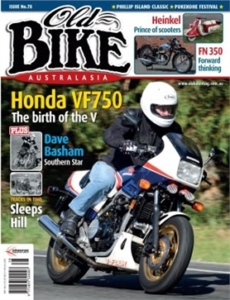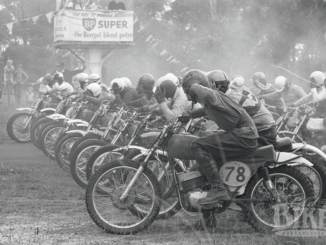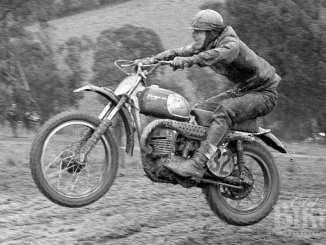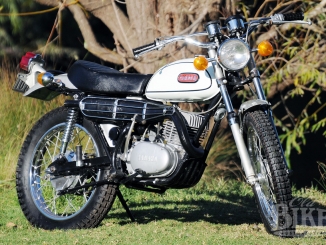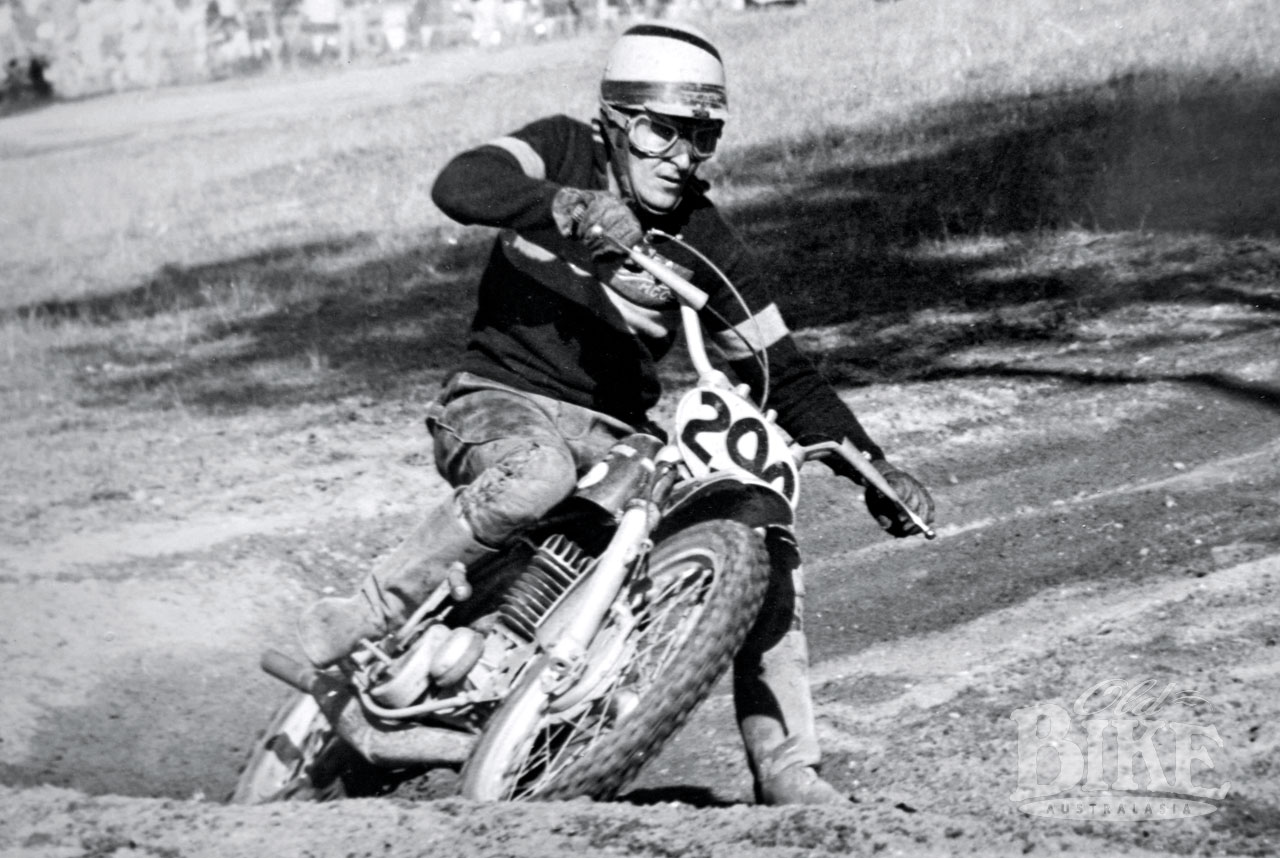
From our Old Bike Archives – Issue 78 – first published in 2019.
Story: Jim Scaysbrook • Photos: Graeme Longley, Basham archives.
In the long list of great South Australian riders, few are as legendary as Dave Basham, a man who could, and did ride anything in a long and highly successful career. Someone who could never be described as a shrinking violet, Dave speaks his mind, and on the track was as forceful as they come.
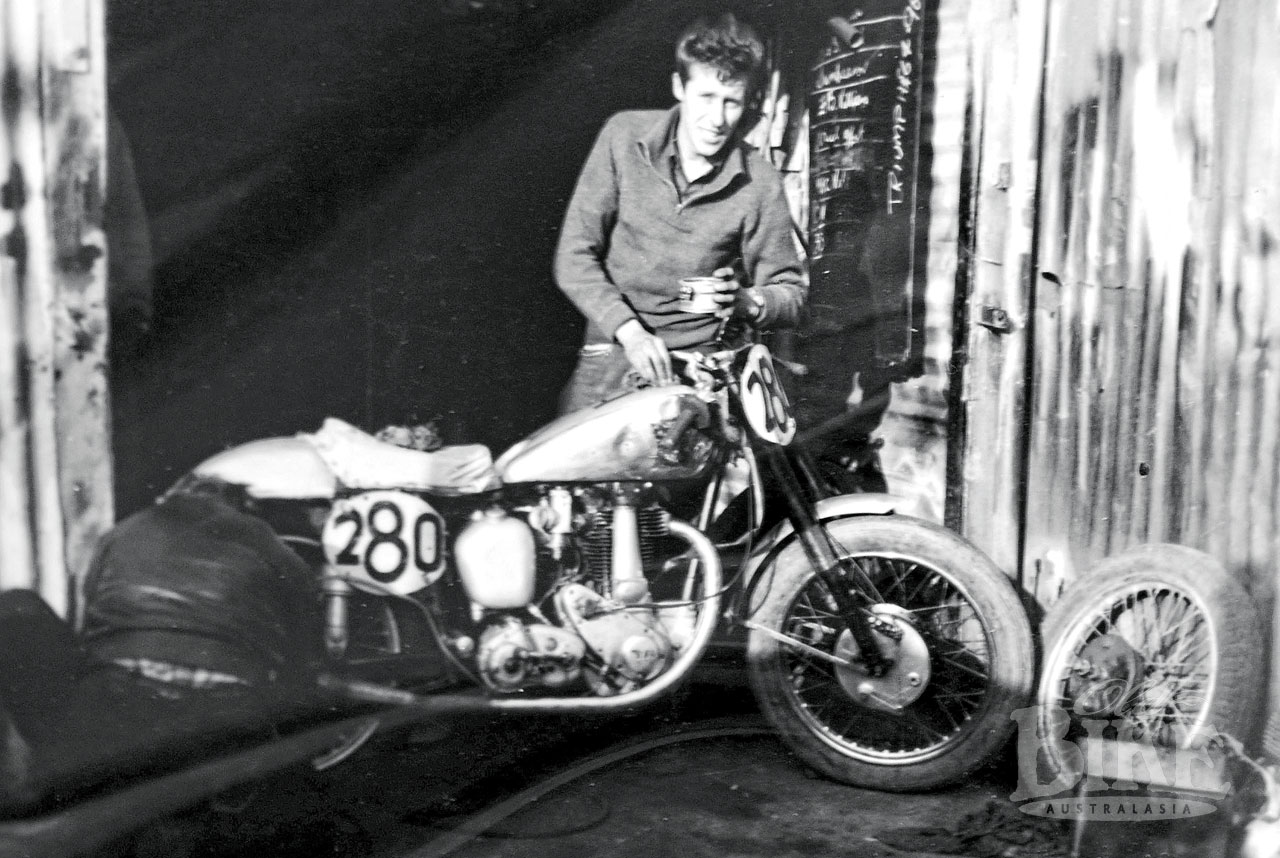
Born on 5th May 1942, Dave left school at 14 to take an apprenticeship as a motorcycle mechanic at J.N. Taylor, the South Australian BSA agents based in Adelaide. He loved being around motorcycles but it was racing that really had his attention. “I was as keen as mustard so I joined the Atujara club and built up a rigid frame 500 B33 BSA,” says Dave. “I had access to stuff from Taylor’s and in those days you could pick up a whole bike for five quid. You’d see one leaning at the side of a house and knock on the door and offer a few quid and they’d say, ‘take it away’. I got a special licence at 15 that allowed me to ride in scrambles and observed trials and had my first race before my sixteenth birthday. This was on the B33 at a scramble at Port Pirie, and I drove up there with Jim Silvey and Graham Burford, who both worked at Taylor’s and were both very good riders. It was quite educational for me learning from those two.”
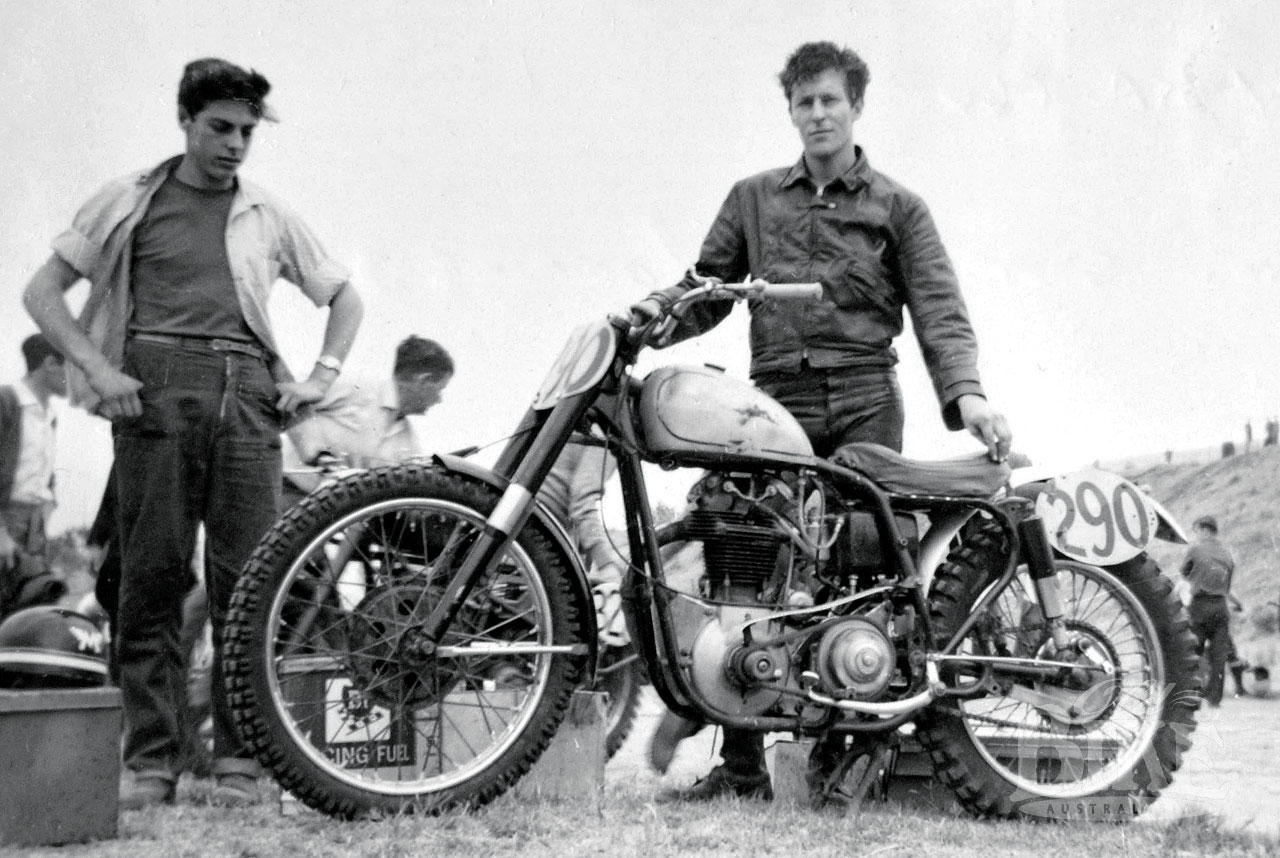
The 500 BSA was soon joined by a 350 B31 which did duty as road transport and was also used for scrambles and also on the big ovals like the mile track at Port Pirie. That track was eventually shortened to half a mile and Dave rode there for more than 20 years. As he gained experience he began to enjoy success in some of the major meetings such as the prestigious Laurie Boulter memorial Scramble, which he eventually claimed on seven separate occasions. The first of those wins came on the 350 BSA, now in a swinging arm frame, which obligingly ran out of fuel virtually as he crossed the finish line. In 1960, he won the gruelling South Australian Grand National on his 500 BSA, where only 6 of the original 60 starters finished the 50-lap event which was run in non-stop rain. The following year he rode a Bantam BSA to win the South Australian Scrambles Championship at Encounter Bay, near Victor Harbor, and took out the state 350cc Short Circuit title in 1962 on his BSA.
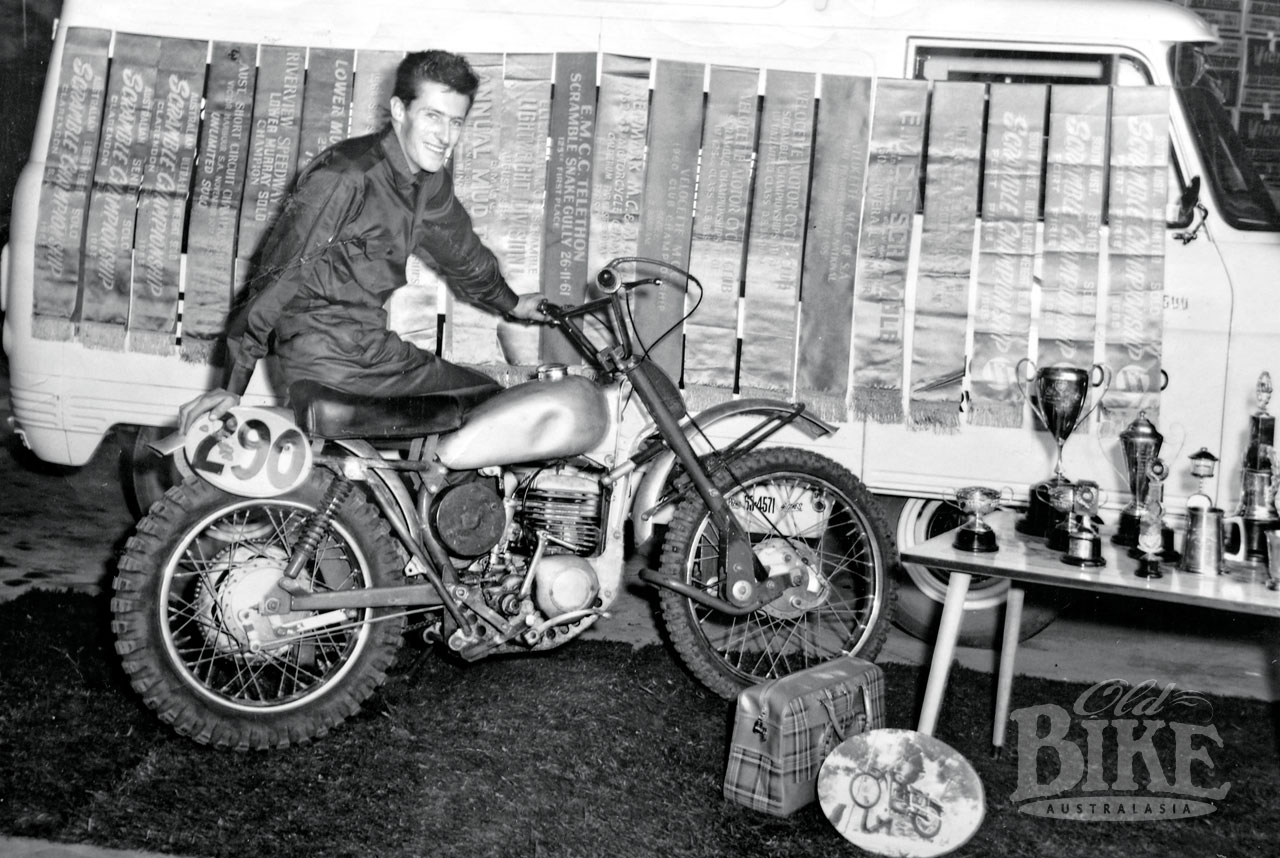
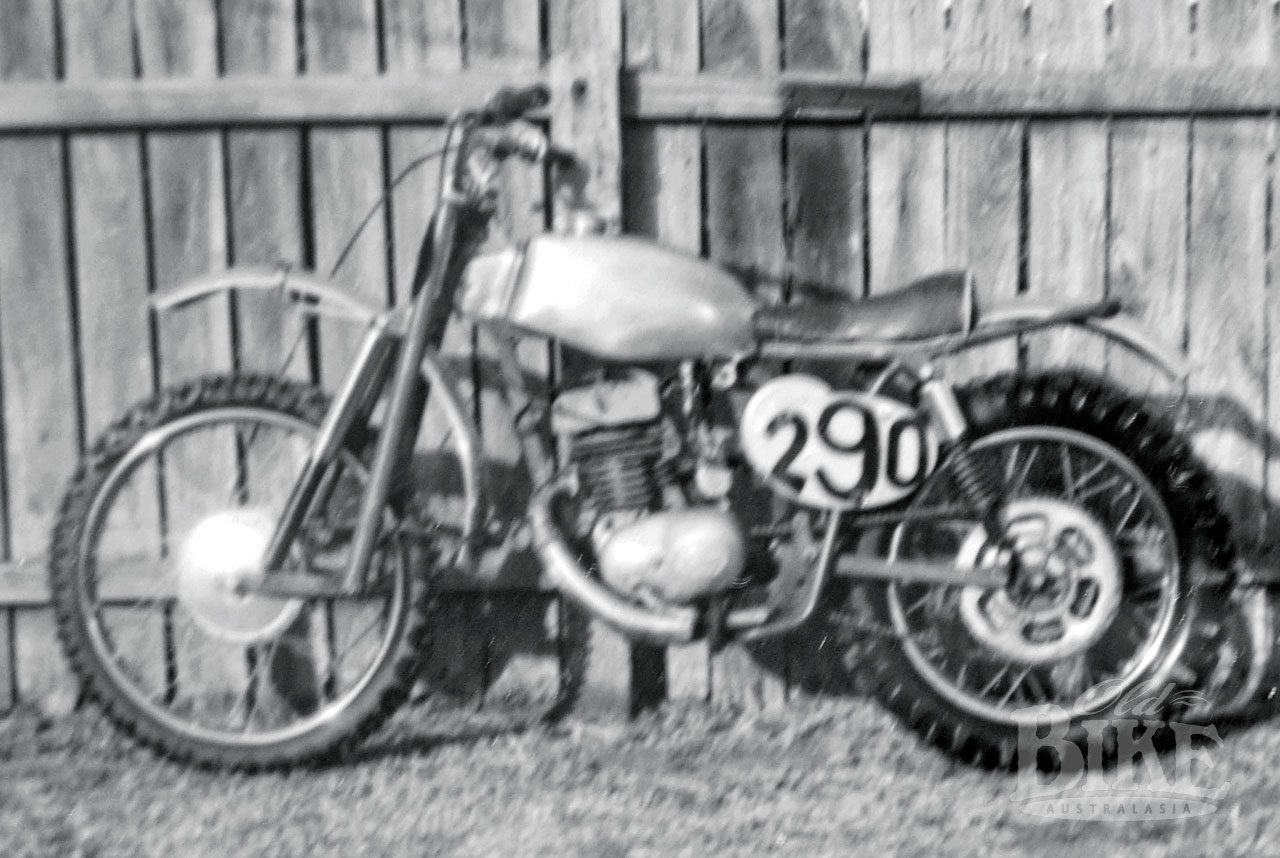
By 1963 he reckoned it was time to chance his arm overseas, and set off for a season in England, where Australian scrambles riders like Charlie West, Ray Fisher, Jack Pringle and Roy East were doing well. At this time, the new wave of 250 two-strokes were taking over from the traditional big bangers, and Dave tried a Greeves and a Cotton before deciding to buy one of the Manchester-made DOTs. Although it was a season without major success (apart from meeting his future wife Babs), it nevertheless honed his skills considerably, and at the end of the UK season he shipped the DOT home to Adelaide. The DOT was only raced once locally before he gained the attention of Frank Gallery, who managed All Make Motors in Adelaide – the agents for Greeves motorcycles. Frank supplied a 250cc Greeves MDS which Dave rode for two years. This was the beginning of a long and successful partnership, and Dave had high hopes for the Australian Scrambles Championships at St Leonards, near Devonport in Tasmania. “The week before we were due to go, the gearbox blew at a meeting at Snake Gully and that was that because we had no spares. It was probably just as well because the meeting in Tassie was a quagmire, and was almost washed out. I rode the MDS Greeves for about two years and then the new Greeves Challenger came out, but I was stuck with the old one. We played around with expansion chambers and different porting but the Challengers were a leap ahead.”
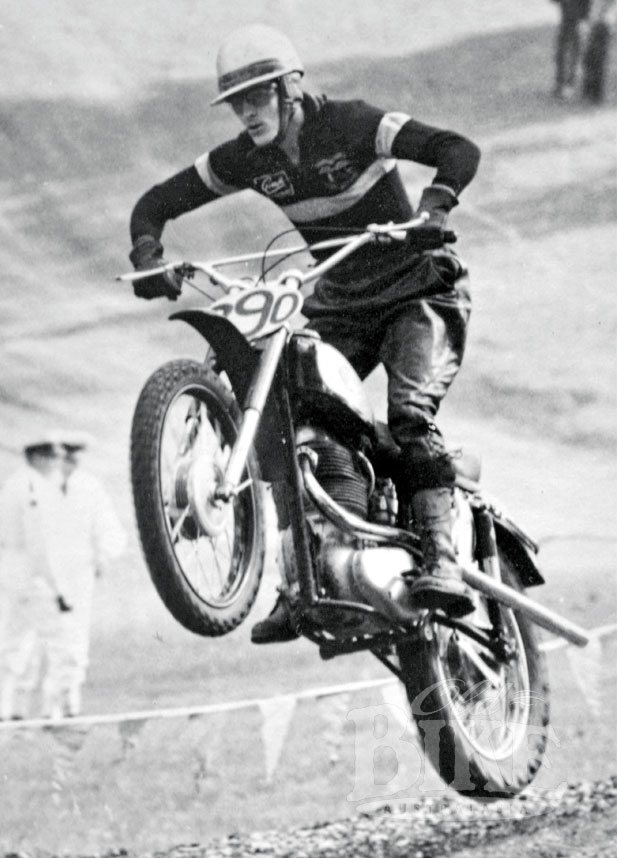
Dave gained an extra start when he was offered one of the very few 350cc ESO scramblers to come to Australia, owned by Dave Williams who operated a wrecking business in Adelaide. Soon he had a 500cc ESO as well, owned by Jack Parker. “I quite enjoyed riding the ESOs, although they were pretty basic. They didn’t even come with an air filter, which I only discovered when I took the side covers off to clean it! One problem was the clutch, which had cork inserts and would start to grab if you held it in gear. I burnt the clutch out on the starting line the first time I rode the 500. Later on we got a Metisse frame kit built by Peter Heywood and put the 500 ESO engine in it, but I couldn’t get on with it. A lot of people had success on Metisses but it just didn’t suit me, I preferred the original ESO, even if it was heavy.”
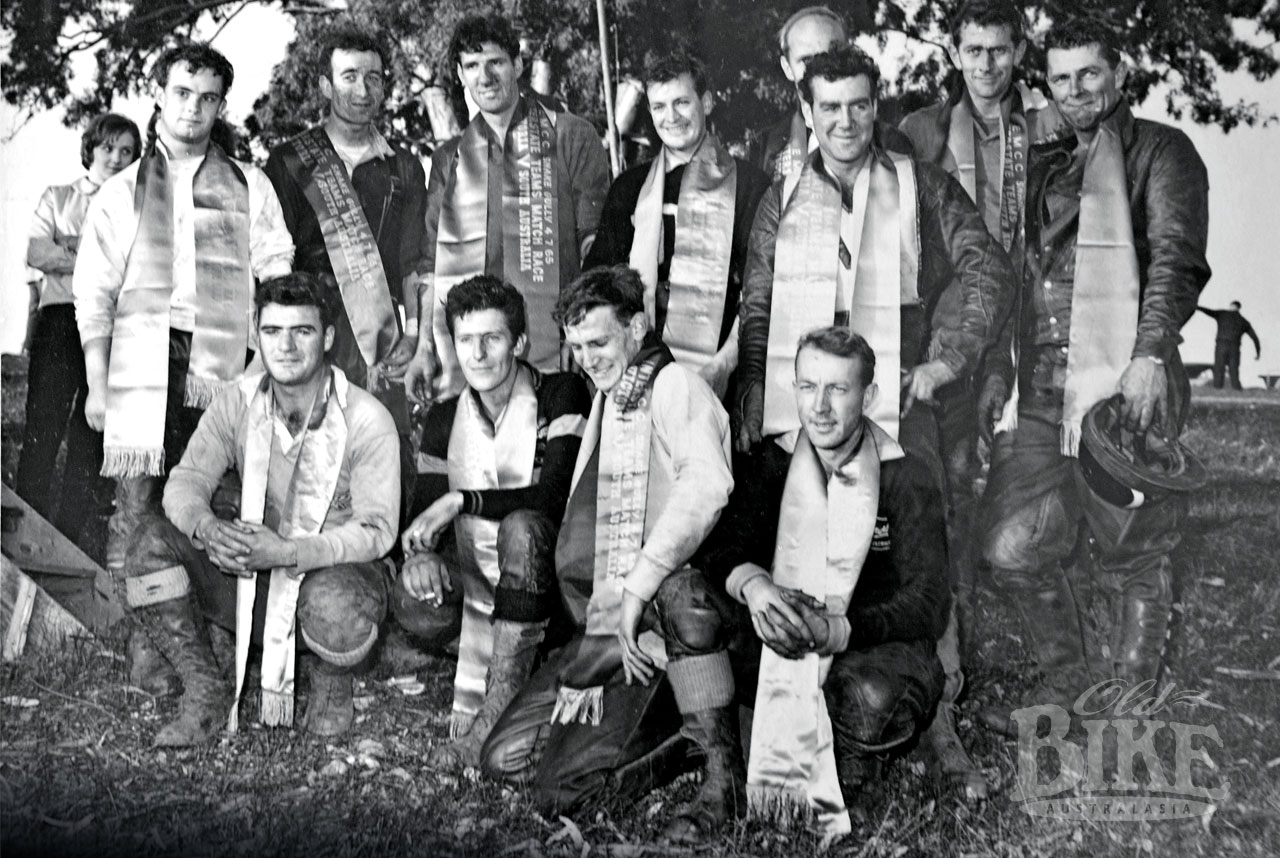
Dave’s most successful outing yet came in September 1965 at the SA Scramble Championships at Backstrom Sandpits, where he won the 125, 500 and Unlimited titles. Aboard the 250cc Greeves, he took out the 1967 SA title in September at Blewitt Springs. But the four strokes were on the way out, and Jack Parker traded the 500 ESO on a new 360cc Greeves, giving Dave a really competitive ride in the 500cc class, and he used it to good effect by again taking out the Laurie Boulter Memorial at Port Noarlunga. Later in the year at Snake Gully, he took the 250, 500 and Unlimited SA Scrambles Championships.
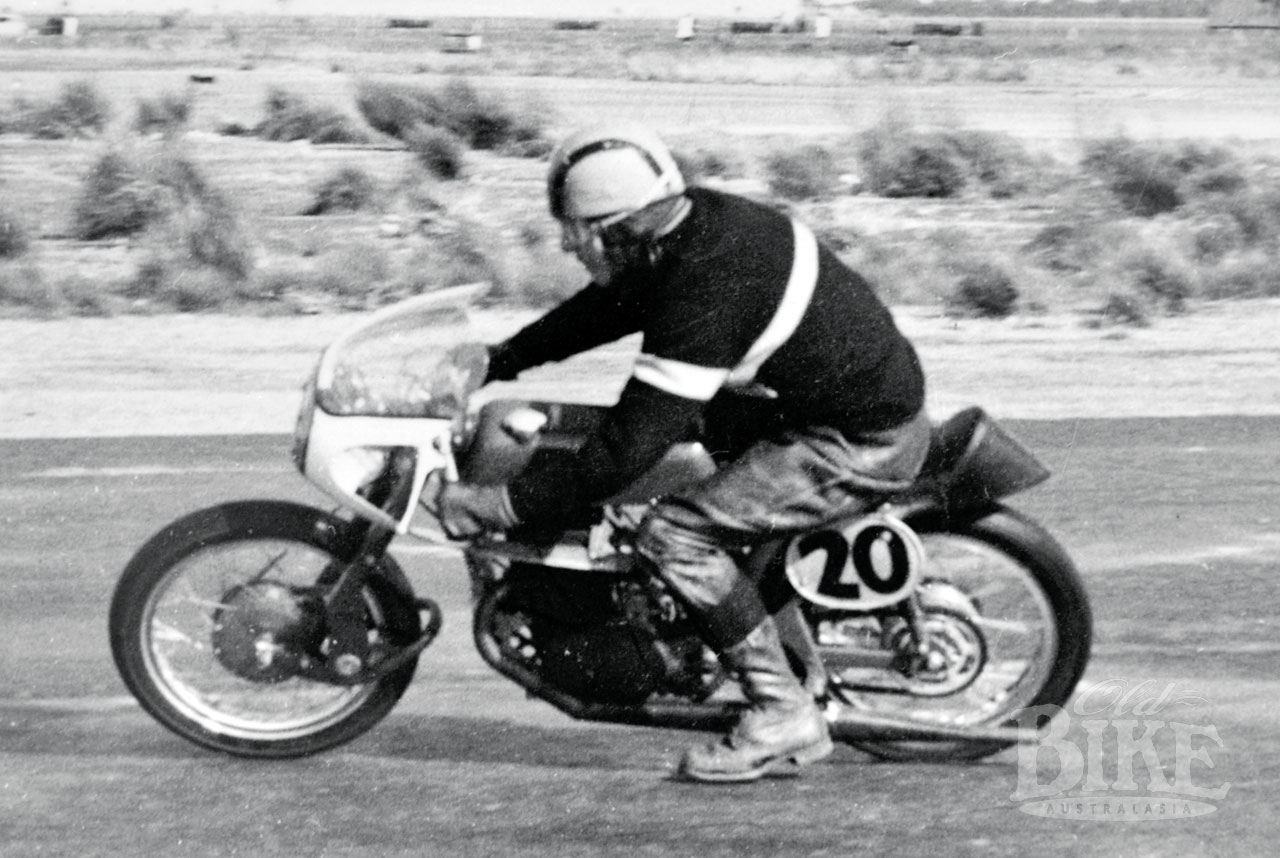
As well as his off-road activities, Dave dabbled in road racing during the ‘fifties and ‘sixties. “The first road race I did was in June 1958 on my 500 BSA at Port Wakefield. I had to wait until I turned 16, which was in May, because you had to hold a road licence to be able to road race, which in those days meant just one track in South Australia.” He later rode a special short-stroke 250cc BSA owned and built by Les Jesser, who also provided an A10 BSA that had been stroked back to 500cc and which Dave managed to destroy after it broke a conrod. The tar outings were infrequent until John Parker, Jack’s son, provided a TD1C Yamaha, a bike Dave says, “Finished me with road racing.” It began well enough, with two wins at Mallala, but overall Dave did not enjoy the experience. “I’d only ridden the TD1C at shorter tracks like Mount Gambier and Mallala, but when we took it to Phillip Island it was completely different. The exhaust pipes would vibrate off, it would detonate and rattle, and then flat out through the Hayshed Corner, it seized a big end. I didn’t crash but it frightened the life out of me. The front drum brake used to get so hot that everything cracked inside it, so John bought a double disc set up from Lyster in England. It would work, then not work – the problem was that it didn’t have a bleed screw in the master cylinder so you never knew what it was going to do. The last time I rode it at Mallala it jammed on and locked the front wheel so I just gave it back to John. He put David Heinz on it and it locked up and spat him off.”
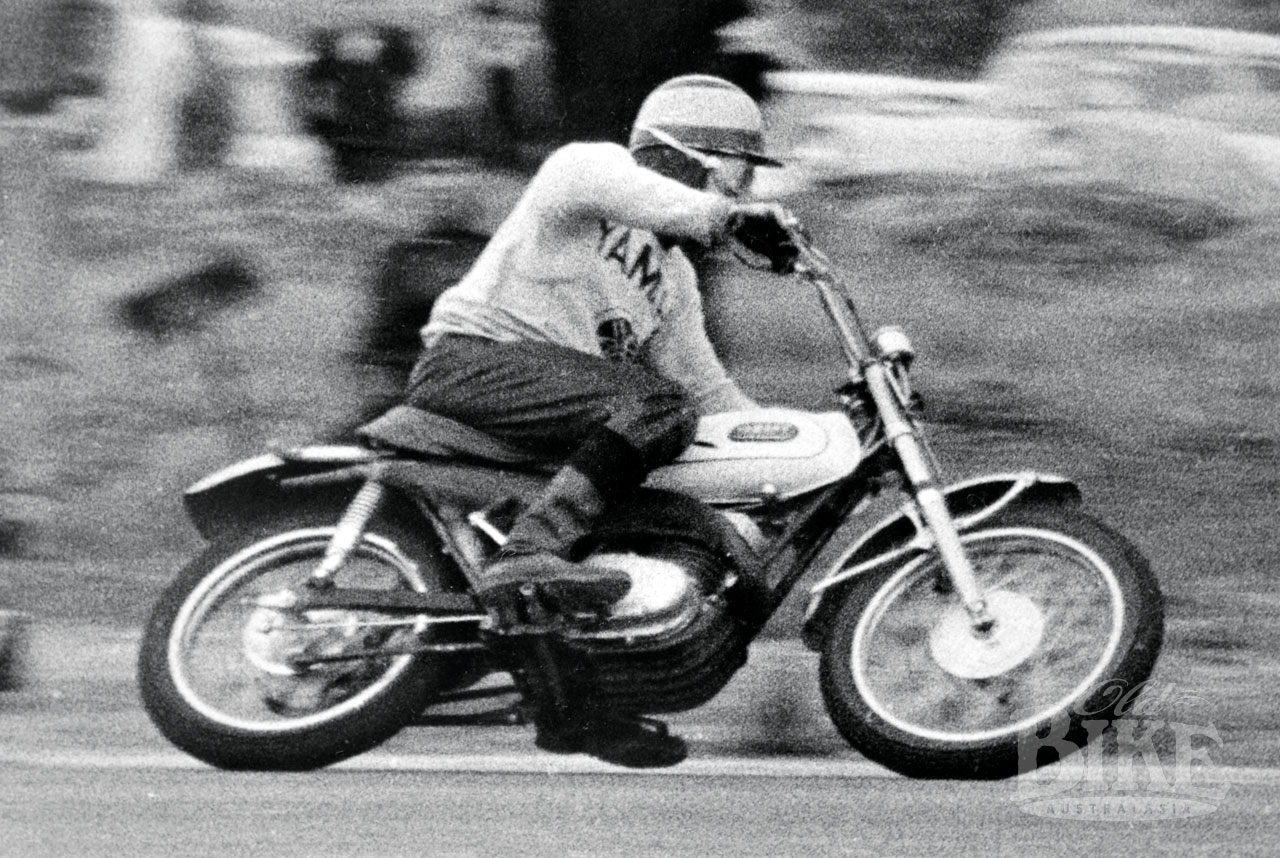
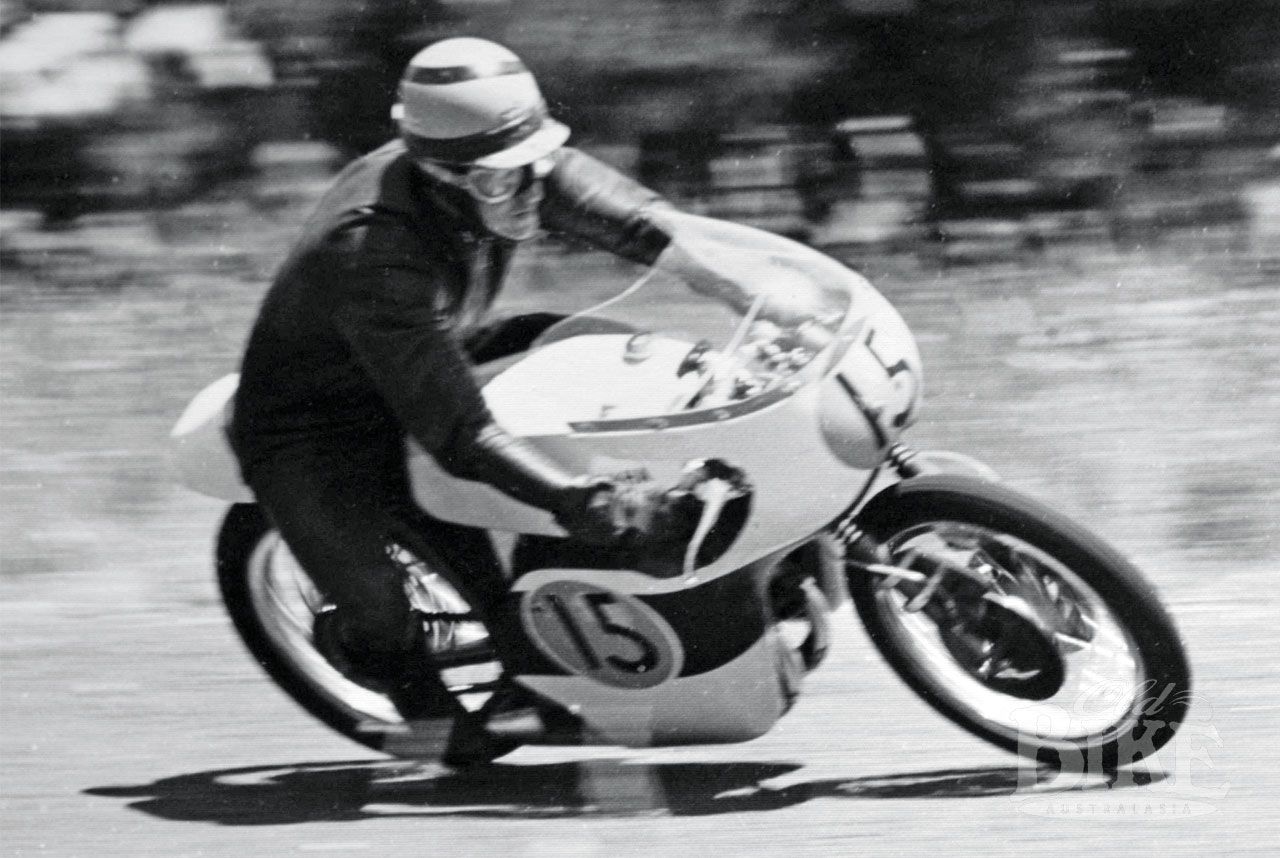
A short-lived but significant point in Dave’s career came in 1968 with the release of the Yamaha DT1, the so-called Trail Bike that also proved itself to be a very competitive motocrosser. “The DT1 was one of the first that Pitmans (SA Yamaha agents) got, and they sponsored me on it with one of the factory GYT kits. I took it to Broken Hill where they had a combined scramble and Half Mile Speedway meeting – the scrambles track was inside the oval. I won the 250cc scramble then came straight to the line without even shutting off the engine for the Half Mile. A couple of blokes had to wire the brakes up because you weren’t allowed brakes on the oval, and as soon as the presentations were over we drove back to Adelaide for the races (SA Grand Prix) at Mallala.” With only a change of tyres and gearing, Dave fronted on the DT1 against the established tar stars, winning the 350cc GP as well as the Unlimited B Grade. It was quite a successful weekend, and one that opened many people’s eyes to the capabilities of the DT1.
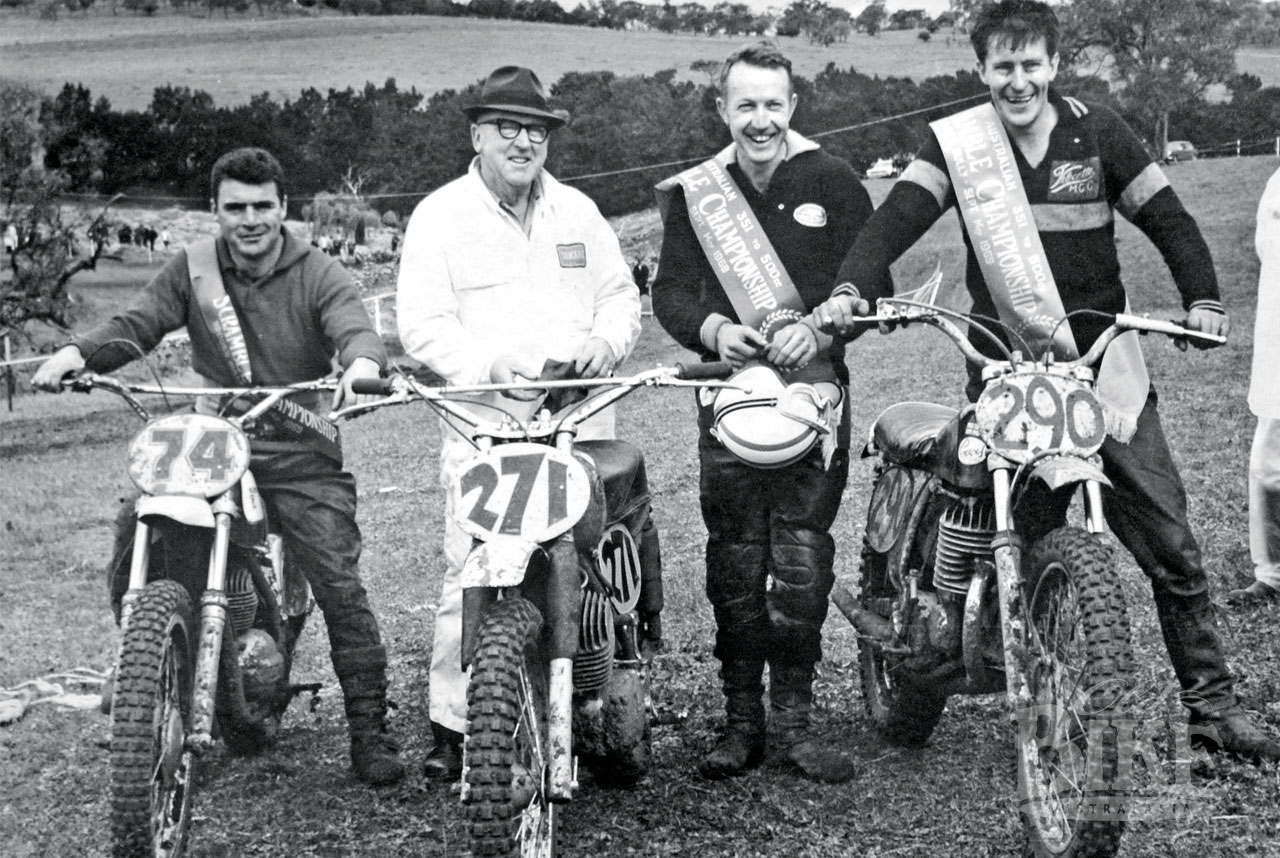
After a decade of dominance in his home state, Dave journeyed to Western Australia in October 1968 to contest the Australian Scrambles Championships, held on the site of a disused coal mine at Collie. While Bob Voumard won the 250 title on the ex-Basham Yamaha DT1, Dave took his 360 Greeves to the 500cc win, defeating Ray Fisher an his all-conquering Matchless Metisse. It was the first of four national titles he would eventually claim. It could easily have been a double title, because while well in the lead in the Unlimited race, the rear chain fell off.
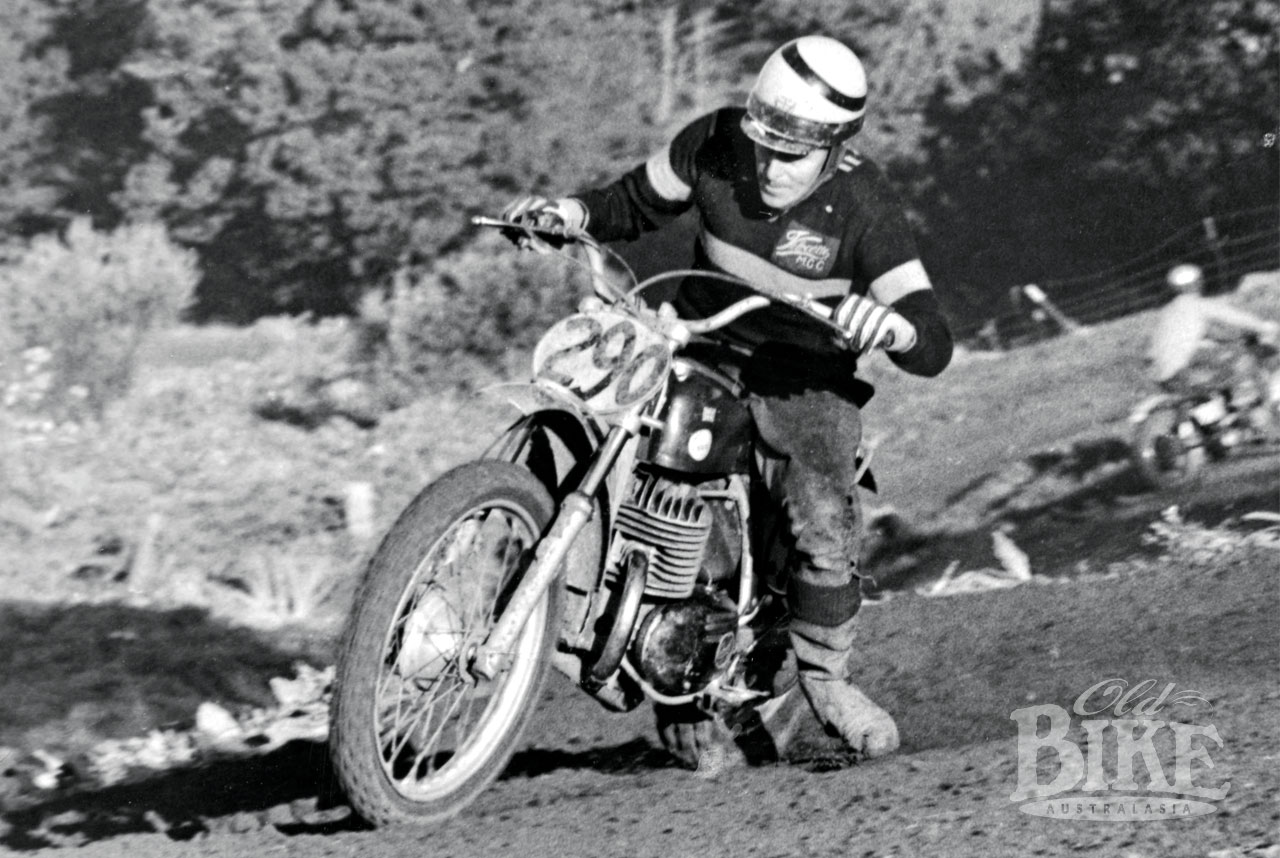
Another double 500/Unlimited SA Scrambles title haul came for Dave and his 360 Greeves in 1969, and the form continued with the arrival of the new 380 Greeves Griffon, on which he again won the Boulter Memorial in 1970. Mike Groom and his 400 Husqvarna were now becoming a serious rival for Basham’s dominance, but at the state titles held in September 1970, it was Basham who once again claimed the 500 win. One year earlier, Dave and Don Southcott, who had worked together back in the J.N. Taylor days, decided to go into business together, opening a motorcycle dealership in the city which they soon outgrew. A move out of the CBD to new premises on South Road with a Yamaha dealership saw the business grow rapidly, with Don handling sales and Dave in charge of the workshop.
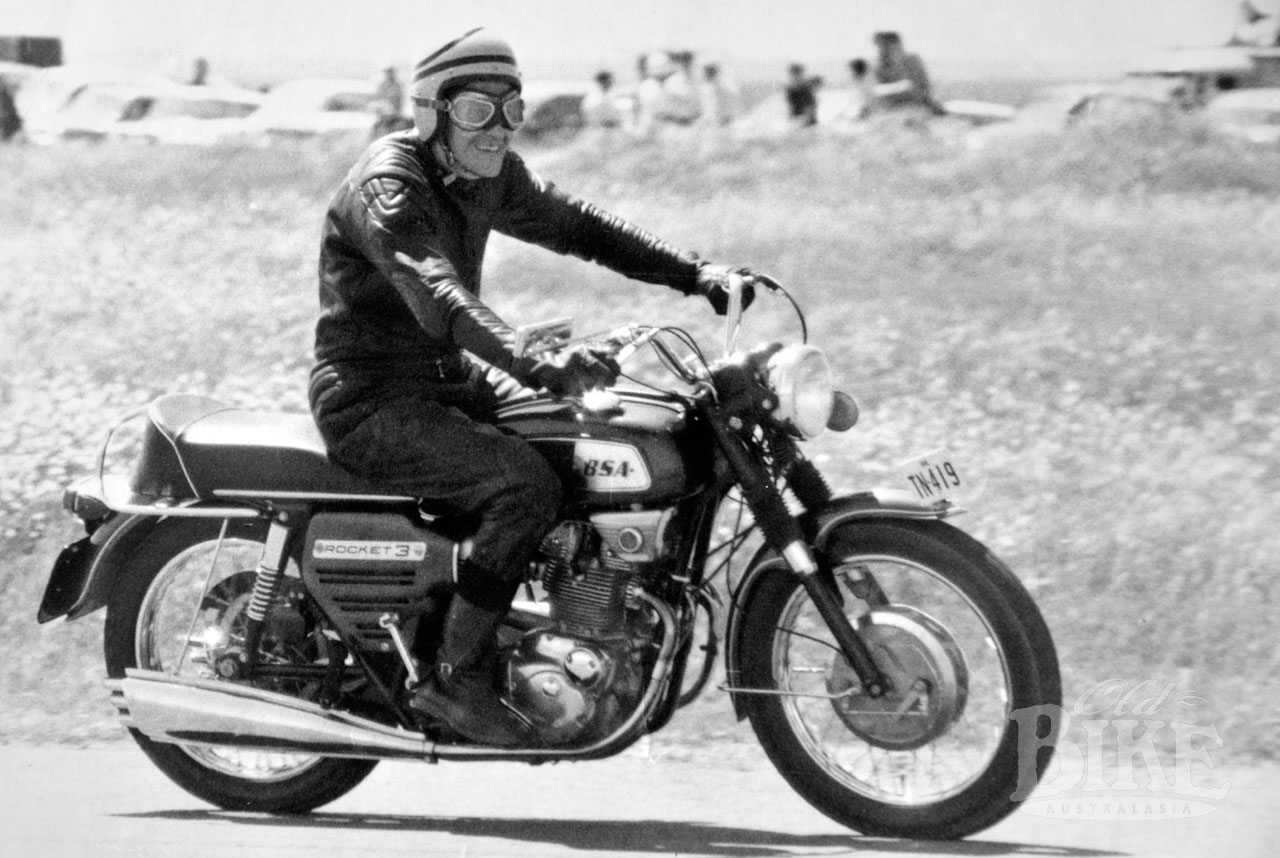
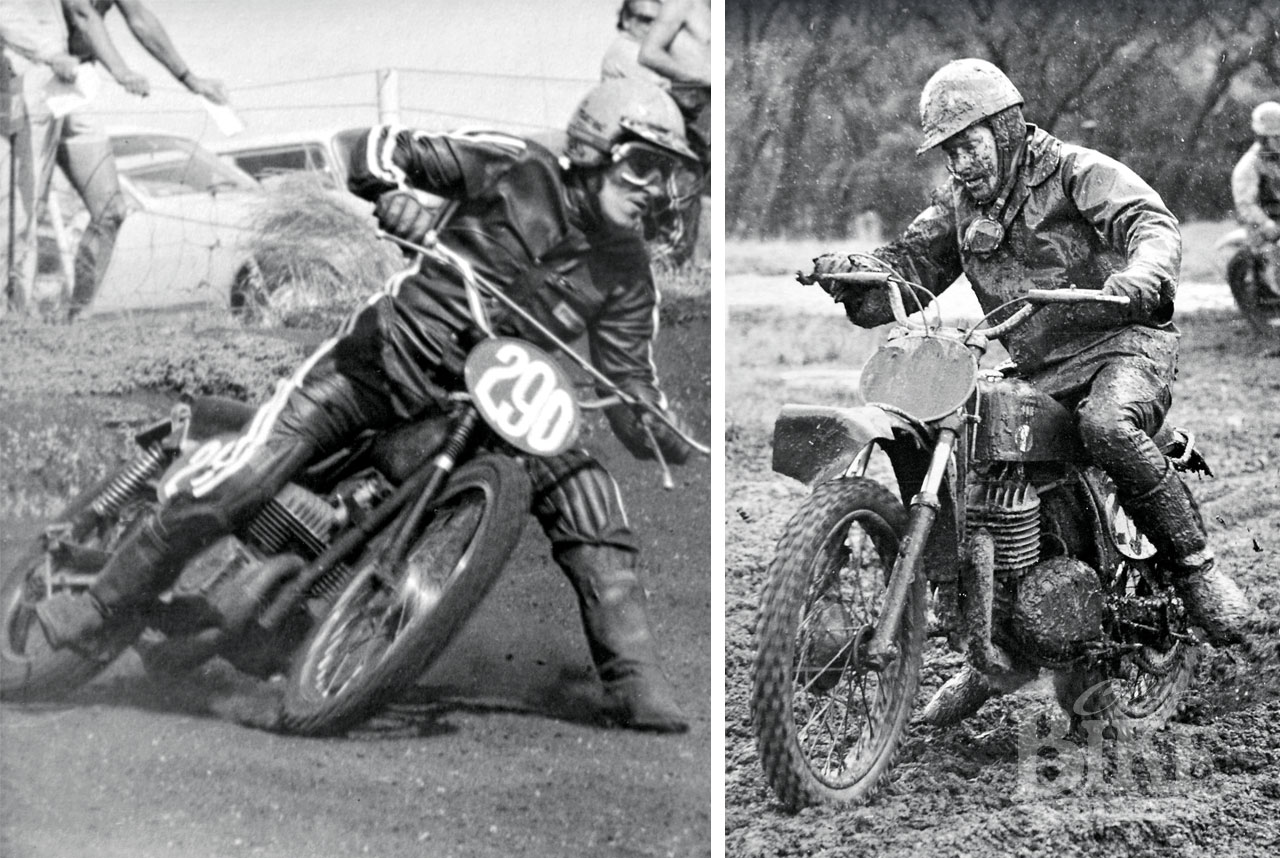
For the 1971 season, he switched marques to CZ, supplied by local distributors Frasers. It was a happy marriage, netting both 250 and 500 SA titles in September at Port Pirie. Two months later he took the 380 CZ to the South Australian Short Circuit Championships at St Kilda, where he sensationally downed NSW star Bill McDonald’s Hagon JAP to win the Unlimited. For 1971, the Australian Scrambles Championships were allocated to South Australia and held at Clarendon. As well as the top locals, the meeting attracted the touring ‘internationals’ – the English Owen brothers Randy and Rowley, Scotsman Jim Aird, and Kiwi Ivan Miller, but Dave first claimed the 125 title on his smallest CZ, then stepped straight onto his 250 CZ to win that class as well.
Around this time, Dave lent his name to a venture to establish a motocross venue at the Silver Lake recreational area at Mylor in the Adelaide hills. The facility was called Basham Park and hosted several successful meetings until pressure from residents forced its closure. “A group of entrepreneurs who owned businesses such as the Chicken Chef chain were all keen motocross riders and they built a track at Silver Lake. But the local ‘weekend farmers’ didn’t like the noise and started a campaign to get rid of it. Don Southcott had got involved with a promoter called Linden Prowse to run an International Moto Cross Series in 1972 and they had a round allocated to Basham Park. It nearly didn’t happen but they finally got dispensation from the local council to allow the meeting to go ahead in December 1972, and basically shut the place after that.”
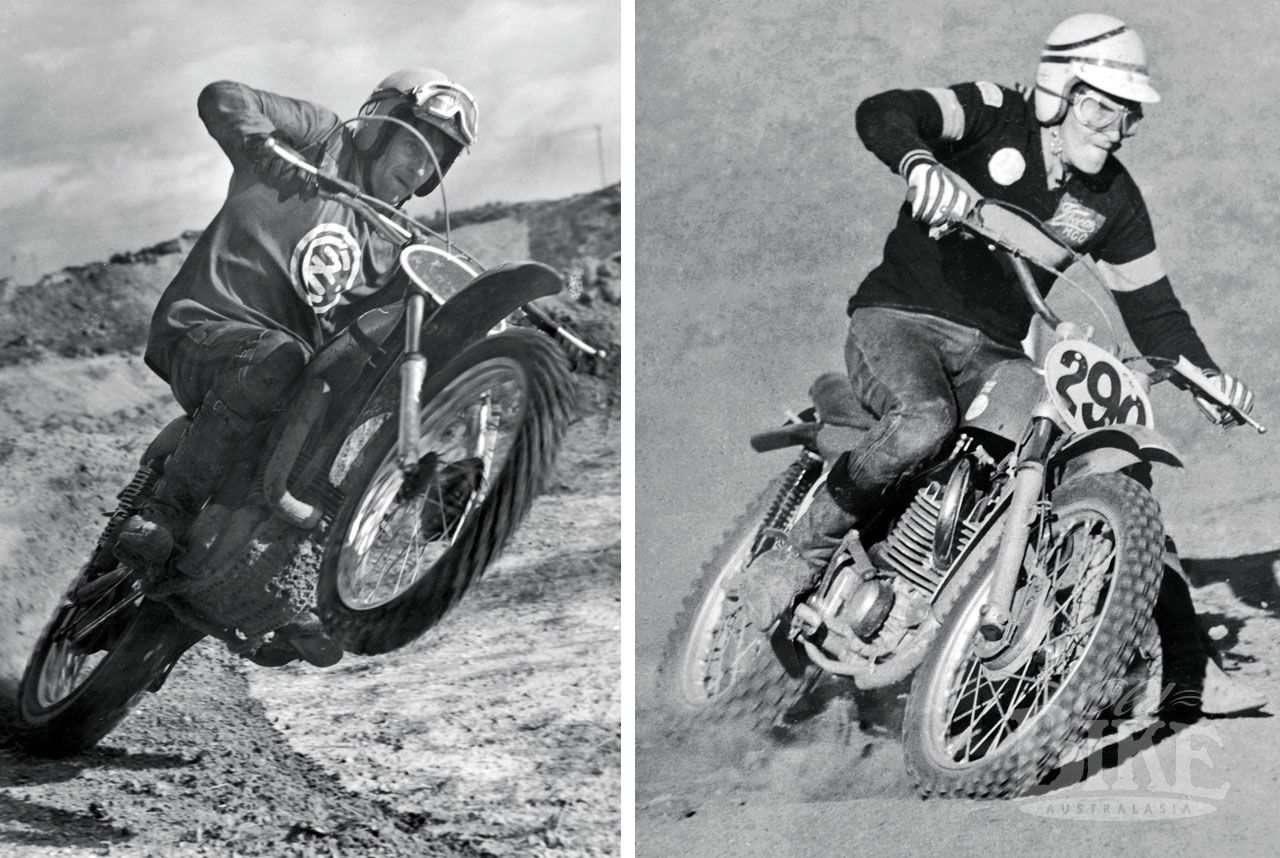
Seemingly improving with age, he won all four classes from 125 to Unlimited in the 1972 SA Scrambles titles, and finished third in the 250cc Australian Championship at Wallan, Victoria. The 1973 National Championships were held in NSW, at Foster Park, a new venue at Mulbring near Newcastle, which drew a massive crowd. In the Unlimited Championship, held over 20 laps of the rugged 2 kilometre circuit, Basham and his CZ withstood all challenges to win after 50 minutes of racing. But the CZs were now outgunned by the latest Japanese machines, as well as the Husqvarnas and Maicos, and Dave reckoned it was time to change marques again for 1974. He signed with Pitmans to ride Yamahas, rewarding them with a triple 250, 500, Unlimited haul at the SA titles at Coleman Park in September. It wasn’t all smooth sailing however.
“I just couldn’t stay on the YZ360A. After so long on CZs it needed a totally different approach. I changed the rear shocks for Girlings and that helped a bit, then along came the new cantilever 360 Yamaha and I got one of those. The first time out the single rear shock blew and it took a while to fix that because there were no parts and no one knew how to fix it. I couldn’t get on with the 360 motor either. Then came the MX400B Yamaha, which had a huge flywheel and I couldn’t slow it down. It was like riding a bike with the throttle stuck open. The next model, the yellow 400 with the air forks, was no better; the frames cracked, as did the swinging arm, and the suspension was pretty crook.”
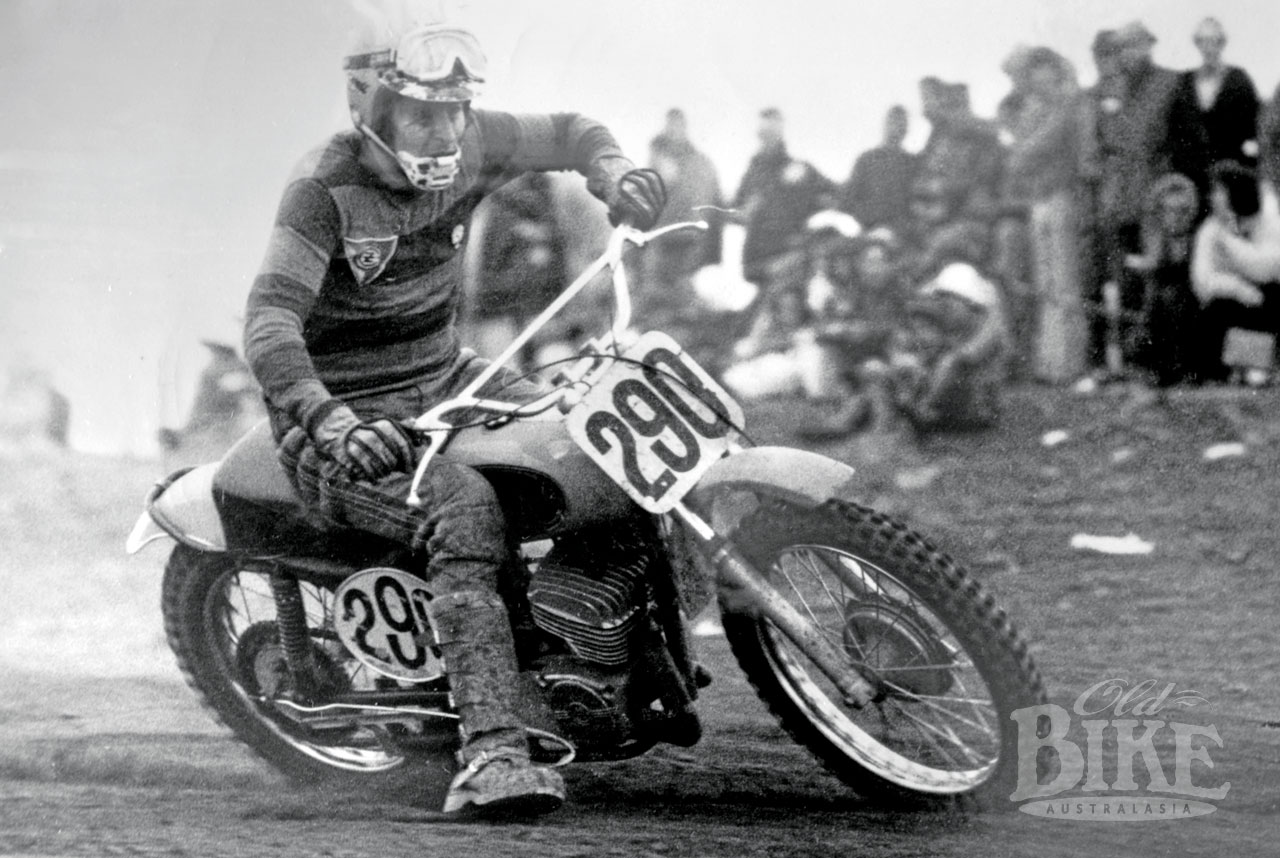
Deciding to make his own way, Dave quit Yamaha and began riding and preparing his own Yamaha. “Before Kawasaki came out with their Uni Track rear suspension, I converted one to a single shock rear end, but I had the lever ratio the wrong way, so the suspension got softer instead of harder as it compressed. Eventually I made my own frame.”
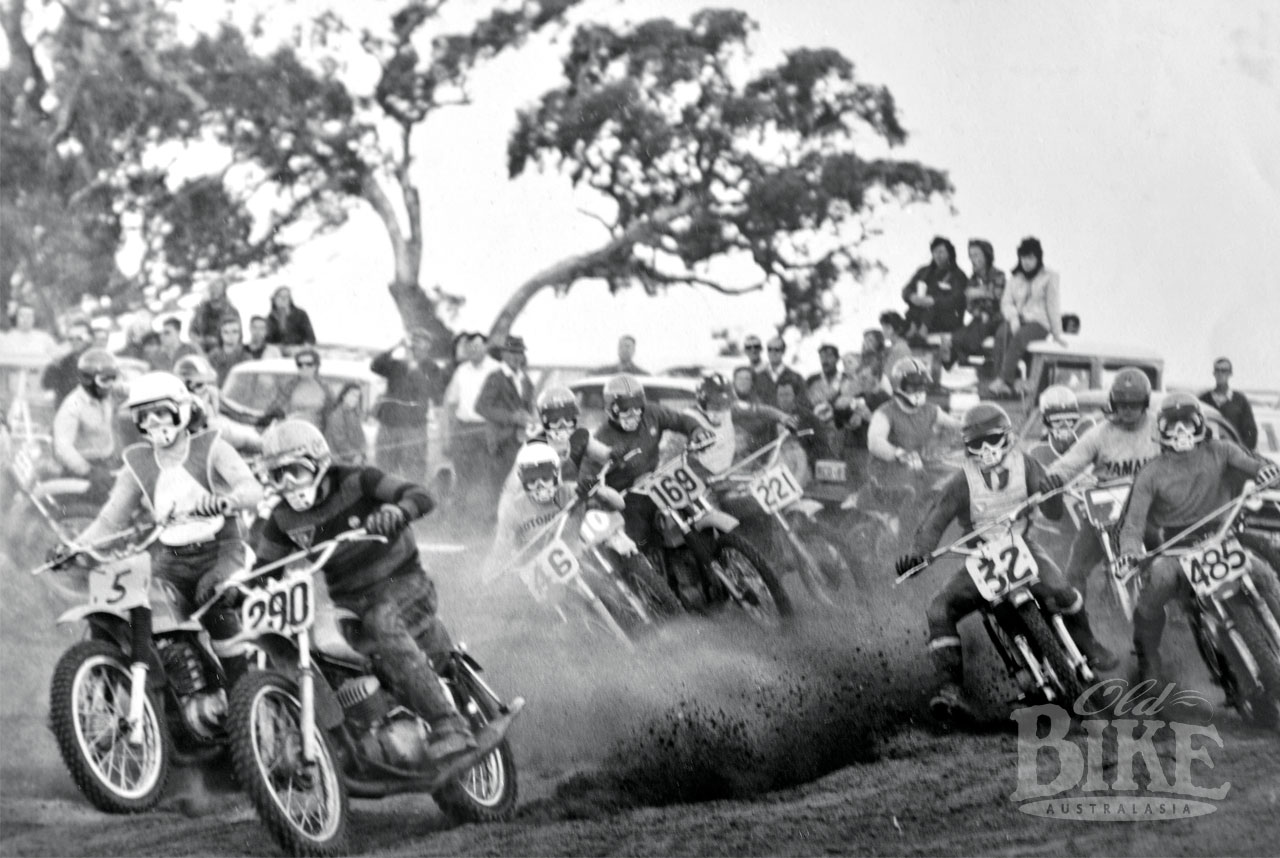
Breaking with motocross, Dave discovered the world of Historic Road Racing, and true to form, decided he could build competitive machinery himself. Also true to form, he chose to go an unconventional route, using a highly modified V-twin JAP engine in a Norton Wideline Featherbed frame. This engine was sold and replaced with an even more radical unit, still JAP-based but with Dave’s own heads and cams, among other things, including his own 1 1/2” GP carburettors. By the early ‘nineties, Dave and Bab’s son Antony (known as Snoop) was in the saddle, particularly after Dave suffered a heart attack while testing the 500cc single cylinder JAP/Norton at Adelaide International Raceway. As well as South Australian races, father and son journeyed interstate for each year’s Australian Historic Road Racing Championships and to the annual Phillip Island Classic. In 1996 ‘Snoop’ convincingly won the 500cc P3 Championship at Mallala on the JAP.
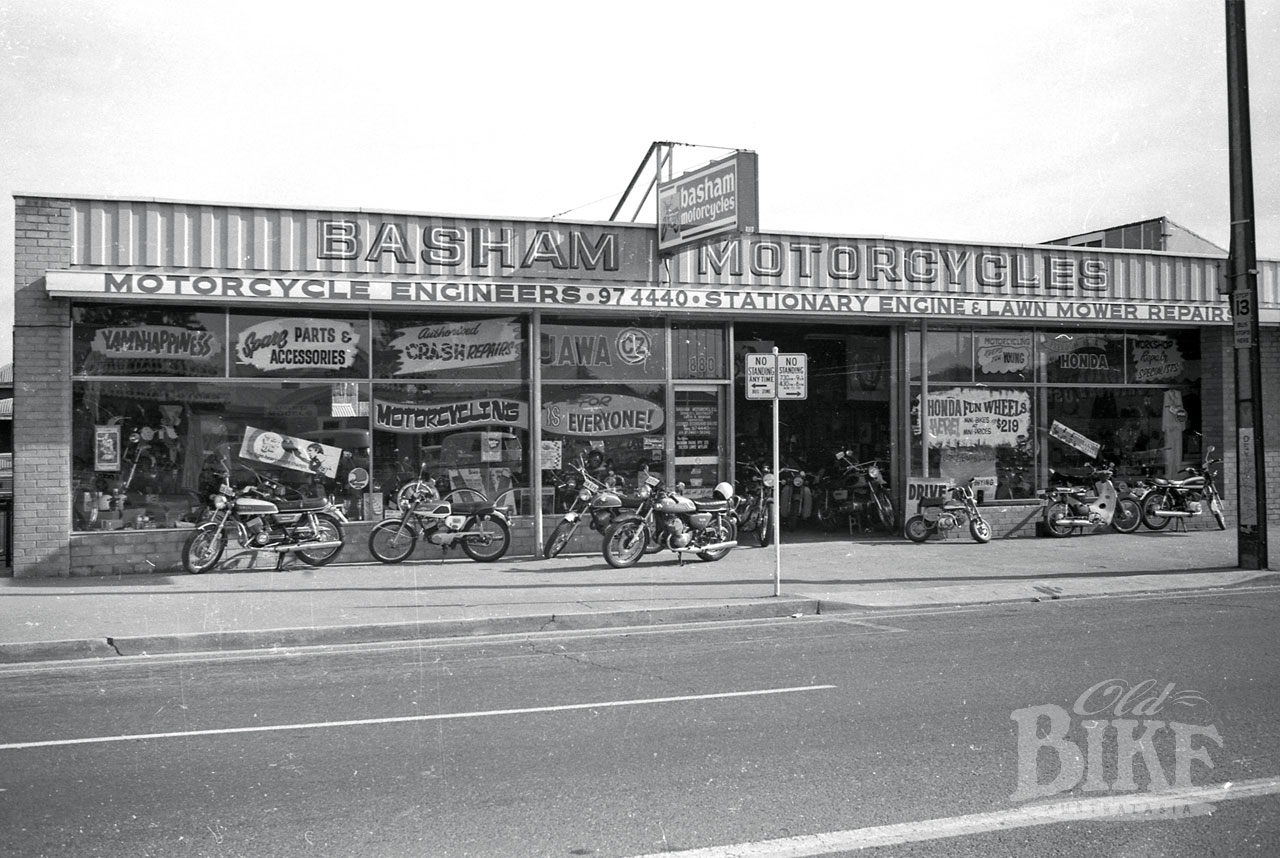
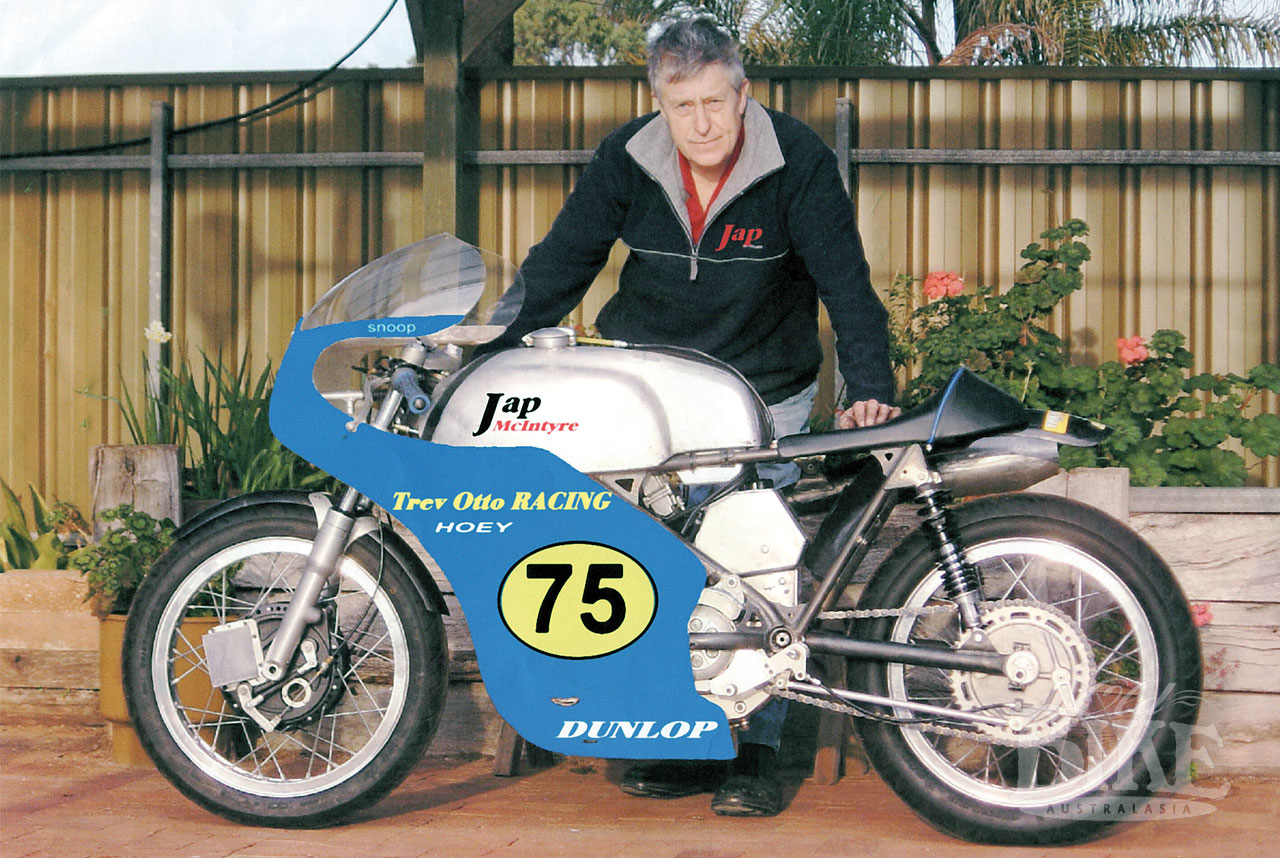
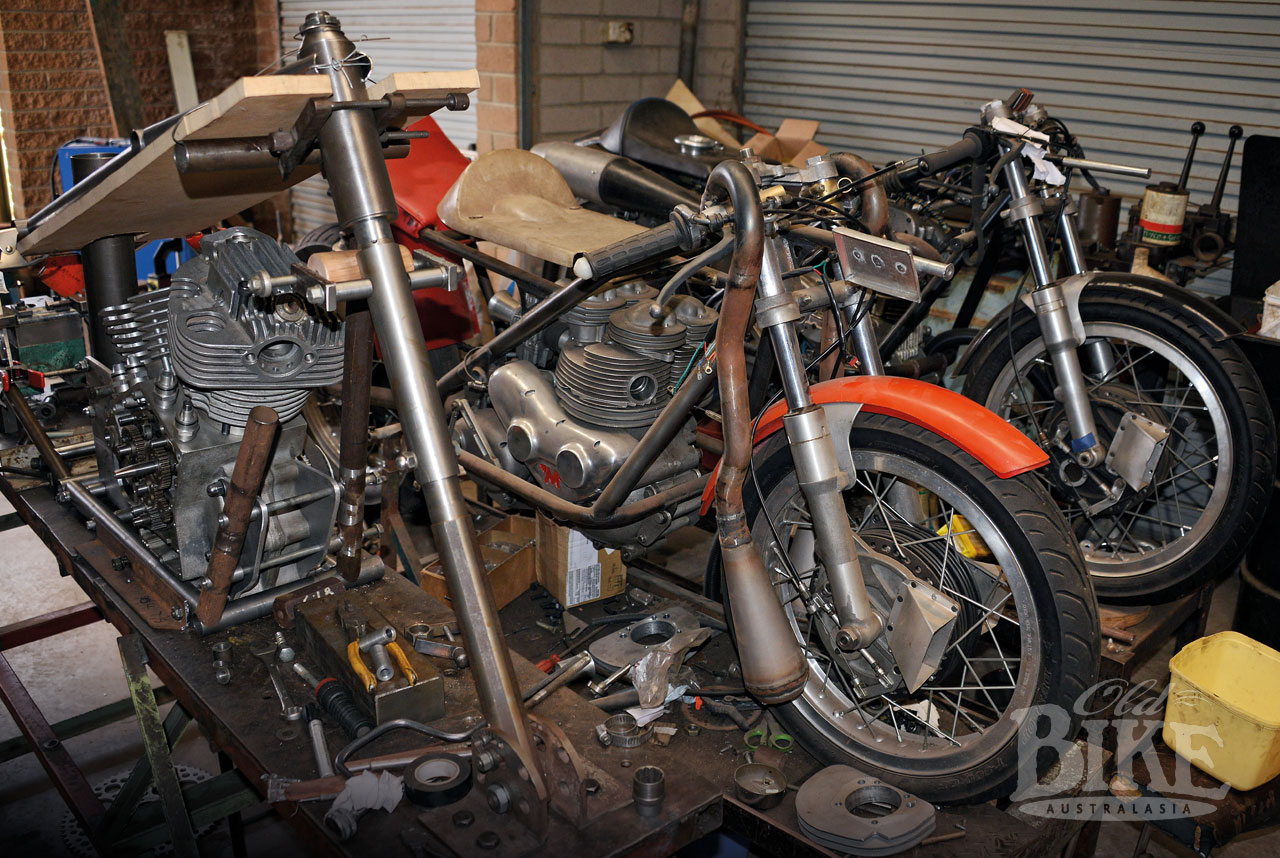
A stroke in 2015 really put the brakes on Dave’s energy, but despite partial face paralysis, he has recovered sufficiently to resume tinkering in his home workshop. There are now several projects in various stages of completion, among them another 500cc JAP, a G45 Matchless, both with replica Macintyre frames, plus a V-twin JAP speedway outfit. You can’t keep a good man down.
